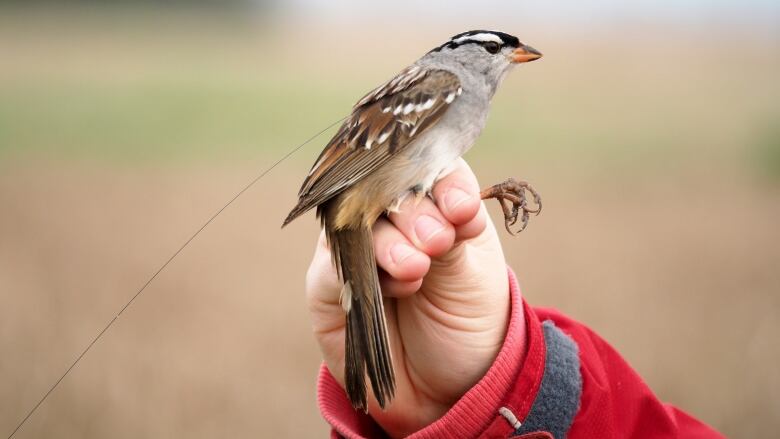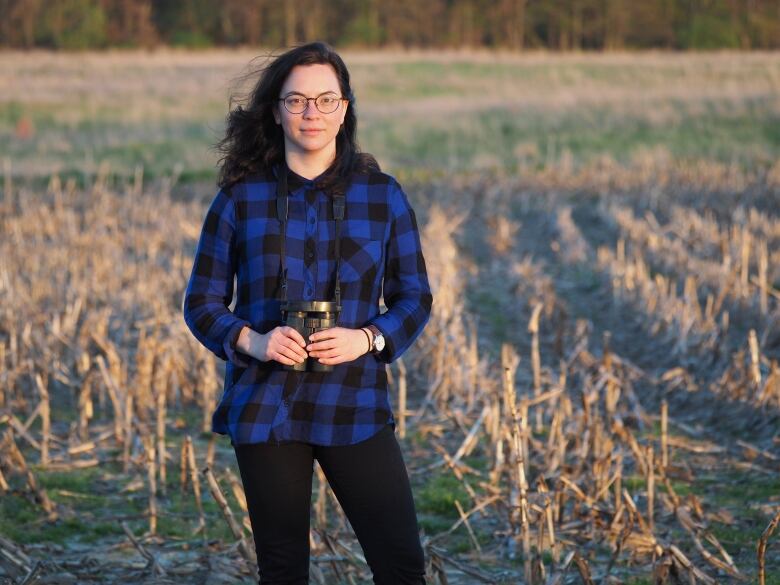Bee-harming pesticides make migrating songbirds sick too, study shows
Concerns raised about neonicotinoids' potential toxicity to other animals

Controversial neonicotinoid pesticides have been shown to threaten bees and other pollinators, prompting Europe and Canada to tighten regulations.
Now a new study shows they can also directly harm seed-eating birds that migrate during spring planting season.
White-crowned sparrows that ate a tiny dose of the neonicotinoidimidacloprid equivalent to a just a few coated seeds and farbelow the lethal doselost their appetite, quickly lost weight at a time when they should be fattening up and delayed their migration to their breeding ground by several days, report researchers at the University of Saskatchewan and York University in the journal Science.
That delay could potentially reduce their success at breeding at a time when bird populations are falling across North America.
If this is bad for birds, what does it mean for people?Bridget Stutchbury, York University
"Just a few days can have a significant effect on their future reproduction and survival," said Margaret Eng, lead author of the new study. Eng is a postdoctoral researcher working with Christy Morrissey, an ecotoxicology professor at the University of Saskatchewan.
The study also suggests that neonics may not be as harmless to vertebrates such as birds as previously thought.
"The most important thing is that it's not just pollinators and bees that are badly affected by neonicotinoids," said Bridget Stutchbury, a professor of biology at York University who also co-authored the study. "That's kind of alarming."

Neonicotinoids,or neonics, are commonly coated on seeds like canola, soybeans and corn before the seeds are planted, and end up in the entire plant, including the leaves and flowers, as it grows, warding off insect pests.
Many studies have shown the pesticides can harm insect pollinators such as bees. But impacts on birds haven't been as clear.
Researchers in Europe found a decline in insect-eating birds in areas with high pesticide levels, which was thought to be due to the effect on insects, and a recent study found that birds living near treated fields delayed egg-laying and had chicks that weren't as healthy. Previous lab studies have shown that small birds can be killed or sickened by eating imidacloprid-treated corn kernels.
But the new study is the first direct evidence that neonicscan directly harm wild seed-eating birds.
White-crowned sparrows spend the winter in the southern U.S., but breed in Canada's boreal forest. Theymigrate north just as seeds are being planted in fields in the U.S. and southern Canada.
En route, they fatten up on any seeds they find, which could potentially expose them toseeds coated with neonics.
While those seeds are designed to be injected or buried in the soil, a recent study has found that spills are frequent, spilled seeds are often eaten by birds and mammals, and many fields have exposed seeds on the surface.

To find out if such seeds could harm migrating wildbirds, Eng joined researchers around the world who flock to Long Point in southern Ontario each spring. Birds are caught in nets and banded are they funnel through en route to their breeding grounds. White-crowned sparrows were directed to Eng.
"You only have maybe a week or so to actually catch these birds as they're flying through this region," she said. "That probably was the most stressful part."
Tracking network
Eng fed about a dozen birds with each of two different low doses of imidacloprid-laced oil, and gave untreated oil to another dozen for comparison. She observed the birds for about six hours, then released them with tiny tags on their backs. The tags send a signal as the birds fly past receiving towers dotted across the region.

The wild birds also experienced loss of appetite and weight loss, and tended to spend an average of 3.5 days recovering before continuing their migration.The good news was that once they did, they had no trouble going in the right direction, even though lab studies suggested that neonics affect birds' ability to orient themselves.
The researchers think wild birds just don't fly until that effect wears off.
But Eng noted that hunkering down to recover could leave the birds more vulnerable to predators or extreme weather. And the delay itself could have more serious negative impacts.
"Birds that take longer to migrate and arrive later are less likely to find territories and mates on their breeding ground, and they have lower productivity generally if they are able to nest," she said. They also might not arrive at the optimal time for other resources, such as the peak of food availability, she added.
Stutchbury said more studies need to be done to find out how widespread these effects might be among other birds and whether that might warrant changes to regulations.
"Now we can add neonicotinoids to the list of concerns around bird declines, unfortunately," she said, adding that the research also raises questions about potential impacts on mammals.
"If this is bad for birds, what does it mean for people?"
Ryan Norris, a University of Guelph biology professorwho studies migrating animals including birds and insects, was not involved in the study, but said effects shown in the study were "striking."
He said the challenge now is to see how these effects extend to survival and reproduction, and how the doses in the experiment compare to actual exposure seen in wild birds.
The study was funded by Natural Sciences and Engineering Research Council of Canada (NSERC), the Kenneth M. Molson Foundation, and Mitacs in partnership with Bird Studies Canada.












_(720p).jpg)


 OFFICIAL HD MUSIC VIDEO.jpg)
.jpg)



























































































